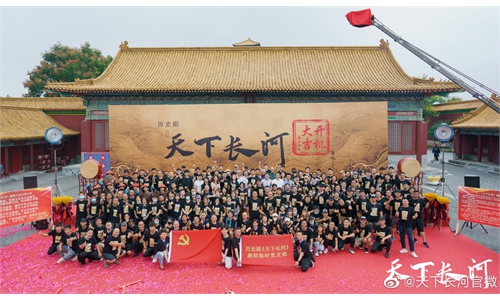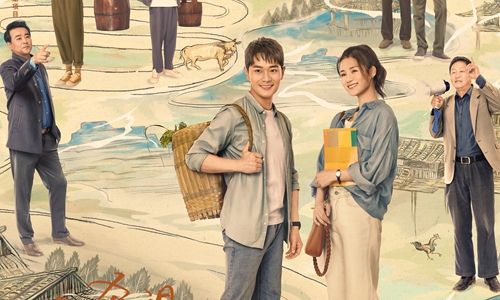ARTS / ART
Chinese traditional silk tapestry technique adds some color to new period drama
Weaving a story
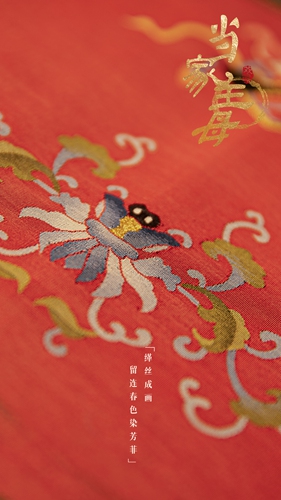
Promotional material for Marvelous Women Photo: Courtesy of Huanyu TV
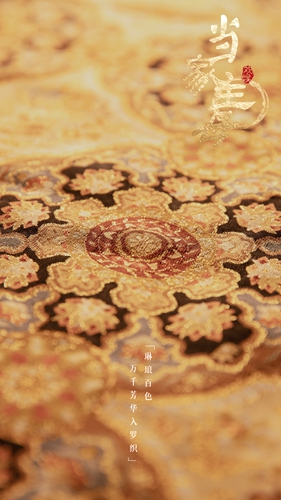
Promotional material for Marvelous Women Photo: Courtesy of Huanyu TV
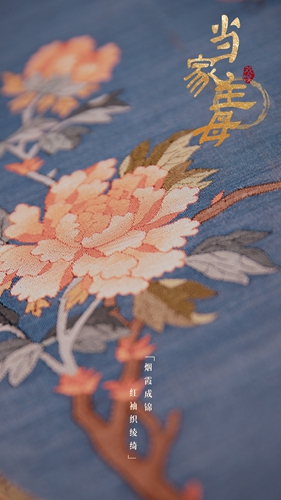
Promotional material for Marvelous Women Photo: Courtesy of Huanyu TV
More Chinese TV dramas are looking to incorporate traditional Chinese culture, including Marvelous Women, which started airing on Monday and is colored by Chinese kesi, a traditional silk tapestry weaving technique.The drama produced by Huanyu TV takes place in Suzhou in what is today's East China's Jiangsu Province during the reign of the Qing Dynasty's (1644-1911) Qianlong Emperor and tells the story of two women who break from the shackles of feudal ethics and lead their family's revival by mastering kesi.
After marrying Ren Xuetang, Shen Cuixi, played by Chinese actress Jiang Qinqin, begins to manage his family's tapestry and silk business since her husband is only interested in painting and opera.
Zeng Baoqin, played by actress Yang Rong, falls in love with Shen's husband and gives birth to his son. At first the two women hate each other, but after Ren's death they united together to improve their kesi techniques and save the Ren family.
The drama centers on these two women's troubles, endeavors and relationships, creating female images that are independent, strong-minded and powerful.
One of highlights of the drama is its focus on the kesi technique, which was also used to make clothing for royalty starting in the Song Dynasty (960-1279).
To make the story more credible, the production team went to museums to learn and study kesi, and also hired Gu Jiandong, a successor of the ancient technique as an on-set advisor.
The production team even commissioned a large number of authentic kesi works in advance as props.
One of the props that will appear in the 15th episode was inspired by China's national treasure The Vast Land painted by Wang Ximeng, a royal painter in the Song Dynasty. Misty rivers and undulating mountains form the wonderful landscape in the work.
Gu said that he agreed to work with the production team for two main reasons: He liked its theme and story and wanted to promote this ancient technique so more young people can get to know it better.
Gu and his team prepared dozens of kesi works for the series, some of which are very large and complicated.
"Actually, we had planned some works made for the drama, including one with patterns of lotus and mandarin ducks, to be made according to tradition, but we found they needed a sense of depth after we started making them. So we added more colors based on traditional methods and then added embroidery and polishing," Gu said.
The weaving tools used in the series are the same as those used during the Qing Dynasty and were actually used during filming, which got compliments from Gu.
He said that the production team took great pains to ensure everything presented in the drama was authentic.
"All the props they made are complete and real. And they did a great job in every detail, including the design and color of all the machines," Gu added.
Besides the kesi technique, another intangible heritage Kunqu Opera is also on display in the series and some scenes from these classic operas can be enjoyed by viewers.
The series recent released its 12th episode on Chinese video platforms iQIYI, Youku and Tencent Video.
